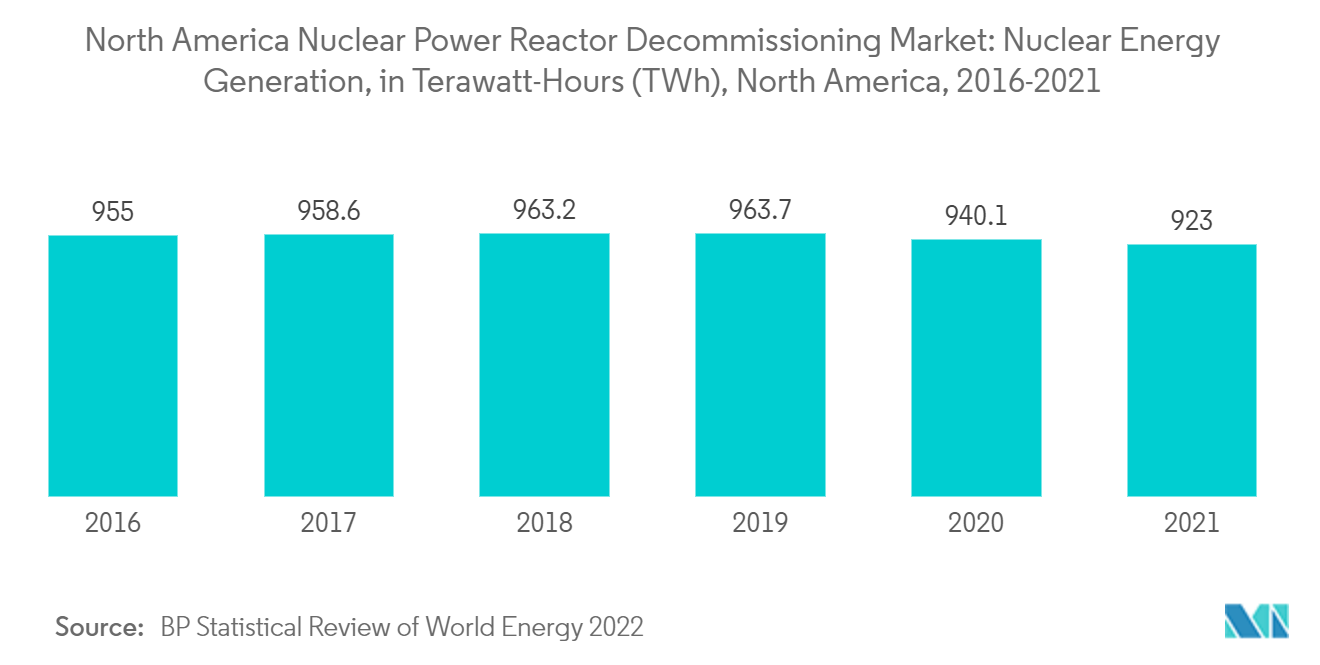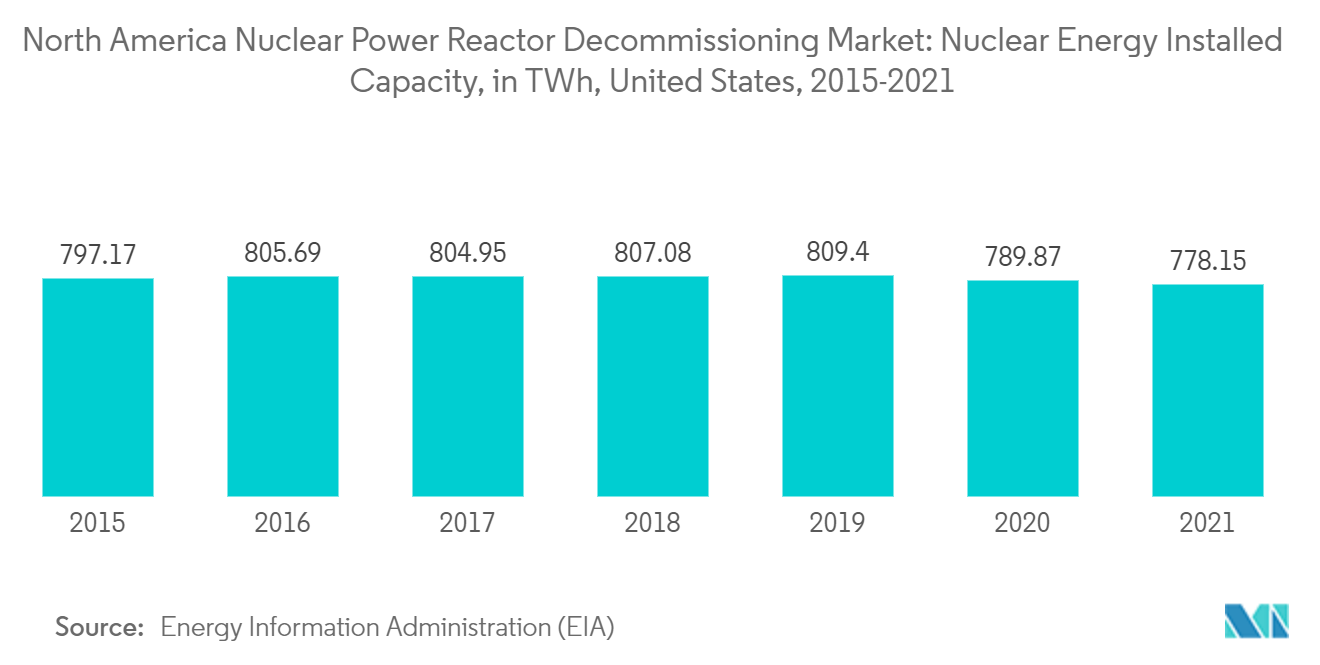Market Trends of North America Nuclear Power Reactor Decommissioning Industry
Commercial Power Reactor Expected to Dominate the Market
- Commercial power reactors are nuclear reactors mainly used for generating electricity. Most of these reactors are being installed in nuclear power plants. Renewable energy from solar and wind is much cheaper and cleaner, thus increasing the demand for installing these reactors.
- The countries in the region, such as the United States and Canada, are decommissioning their old and outdated nuclear power plants, which may drive the North American nuclear power reactor decommissioning market during the forecast period.
- In 2021, North America's total electricity produced by nuclear energy was 923.0 terawatt-hours (TWh), almost the same as in 2020, i.e., 940.1 TWh. The slow-growing or flatness of the nuclear energy curve in the region shows that the nuclear power reactors' decommissioning will surpass the installation of new nuclear plants in the region.
- In May 2022, Entergy Corporation shut down its Palisades nuclear plant on Lake Michigan. The nuclear power plant had an 800 MW power generation capacity. The fuel was removed from the reactor's vessel and placed in the spent fuel pool to cool. After the cooling process, the fuel will be transported to the secured Independent Spent Fuel Storage Facility on the station property. The company also aims to complete the decommissioning of the nuclear plant by 2041.
- Hence, due to such factors, the commercial power reactor sector may dominate the North American nuclear power reactor decommissioning market during the forecast period.

United States Expected to Dominate the Market
- The United States is one of the largest nuclear power producers globally, accounting for almost 30% of the global nuclear power generated in 2021. The country's nuclear reactors produced 778.15 terawatt hours (TWh) of electricity in 2021, representing a slight increase of 0.35% over the previous year's value. The ready-to-retire old nuclear plants are likely to drive the nuclear power reactor decommissioning market.
- In 2021, nuclear power plants in the United States generated around 778.15 terawatt hours of electricity, the lowest output recorded in one decade. The number of nuclear power reactors has been decreasing since 1990, when it peaked at 112 units.
- Over the past decade, intense competition from electricity generation using low-cost shale gas has hurt the competitiveness of the country's nuclear power industry. Record low wholesale electricity prices and the high cost of life extension (PLEX) upgrades have also led to early nuclear plant retirements.
- As the era of nuclear power in the United States comes to an end, the decommissioning of nuclear power plants is becoming a significant industry. Private companies are acquiring these plants, taking over their licenses, liability, decommissioning funds, and waste contracts. Around 41 reactors with a combined capacity of 19.97 GWe were shut down, with the latest being the Palisades nuclear plant in Michigan, which shut down in May 2022. In December 2021, HoltecInternational received approval from the Nuclear Regulatory Commission to acquire the Palisades plant in Covert, Michigan, to decommission and dismantle the plant. An additional 198 reactors are expected to shut down by 2030.
- The nuclear reactor fleet of the United States is now aging. The US Nuclear Regulatory Commission (NRC) is considering applications for extending operating licenses beyond 60-80 years with its subsequent license renewal (SLR) program. However, some plant owners recently opted for early retirements of their nuclear units at 45-50 years.
- Hence, due to such factors, the United States is expected to dominate the North American nuclear power reactor decommissioning market during the forecast period.



